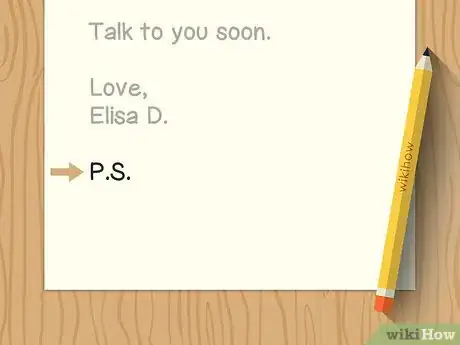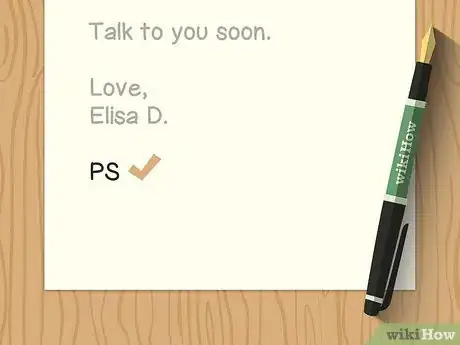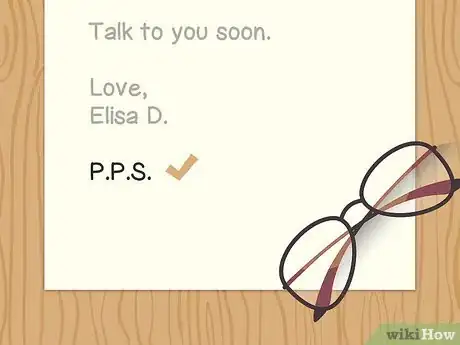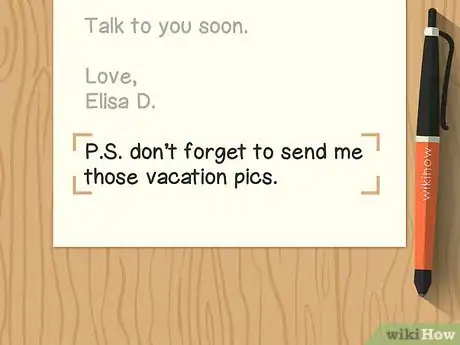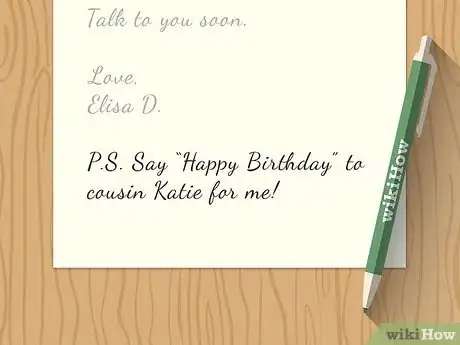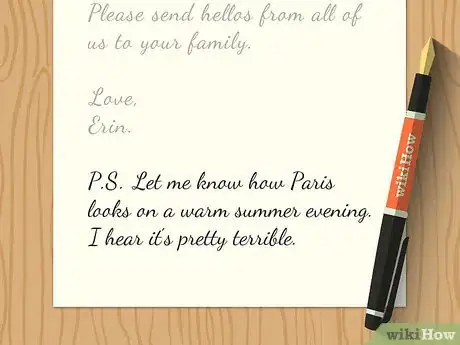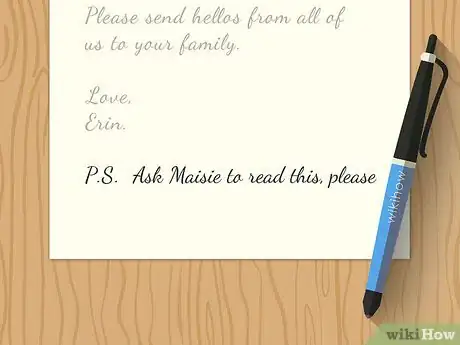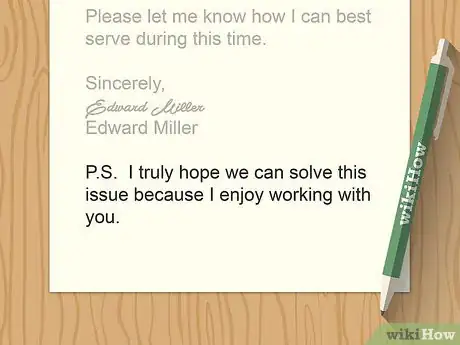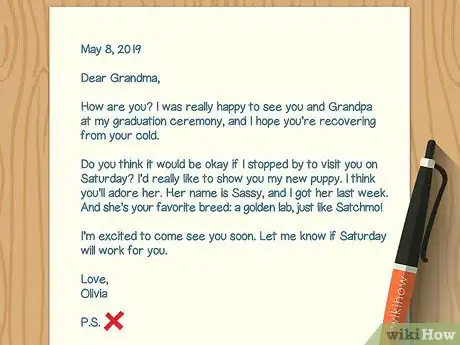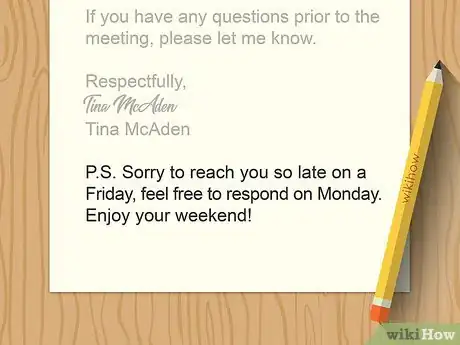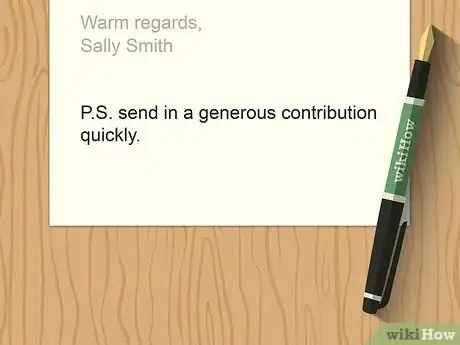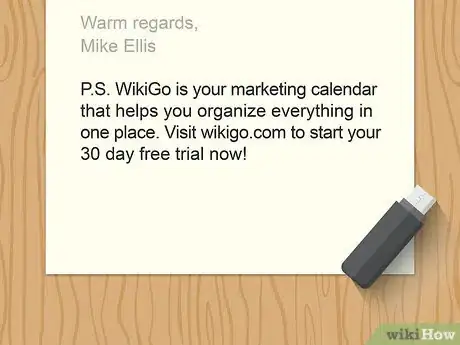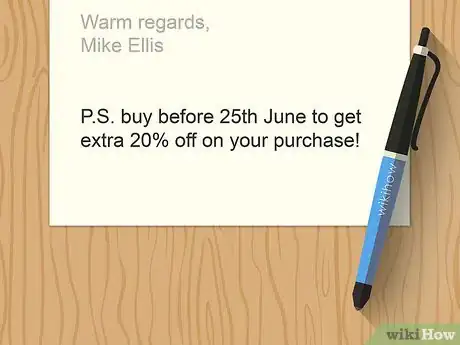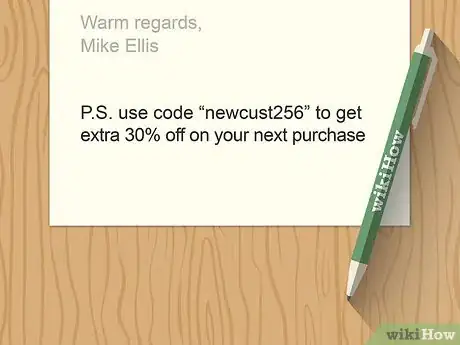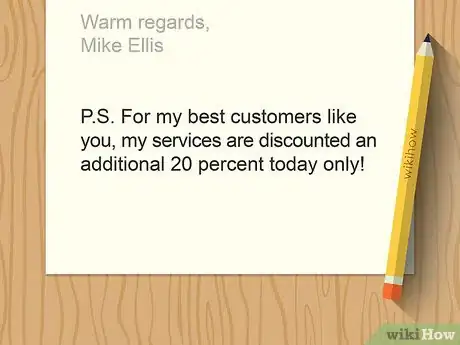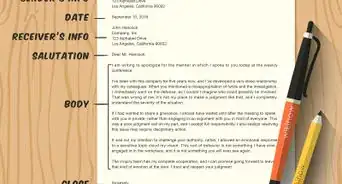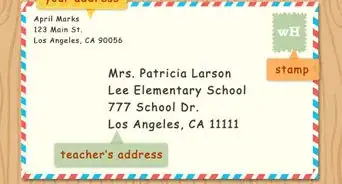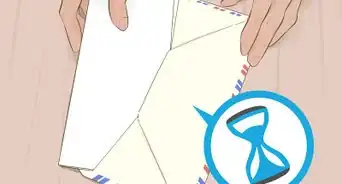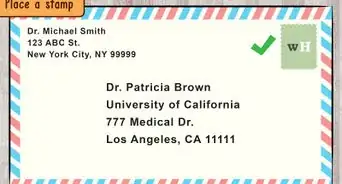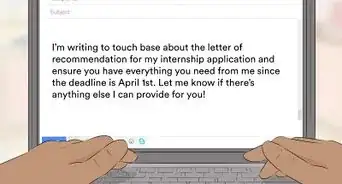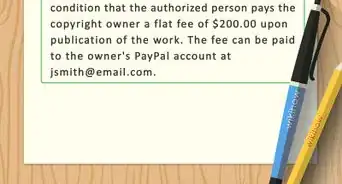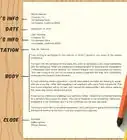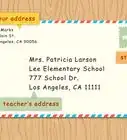This article was co-authored by wikiHow Staff. Our trained team of editors and researchers validate articles for accuracy and comprehensiveness. wikiHow's Content Management Team carefully monitors the work from our editorial staff to ensure that each article is backed by trusted research and meets our high quality standards.
There are 10 references cited in this article, which can be found at the bottom of the page.
This article has been viewed 99,796 times.
Learn more...
The postscript, or P.S., is a versatile tool that has been used in written communication for centuries, and for millenia in other forms. It conveys an additional piece of information that the author of the letter or email either forgot about until the end, is about the message itself, or is somehow separate from the rest of the message. Today, a P.S. at the end of an email or letter has many of the same meanings. You will soon be able to use a postscript to successfully express the tone and information you wish to convey to your reader, whether you are writing a business email, a letter to a friend or loved one, or copy for a marketing message.
Steps
Formatting a P.S.
-
1Place the postscript after your signature. Originally, postscripts were used primarily to add information after the letter was finished and the author had read over it. Following that tradition, the P.S. belongs below or next to your signature in order to convey the afterthought nature of a postscript.[1]
-
2Write “PS” if you prefer it to “P.S.” The two forms of abbreviating postscript are relatively interchangeable, with “PS” being more common in UK English and “P.S.” being more common in US English. You should choose whichever one looks better to you.[2]
- However, it is important to note that P.S. should not be followed by a comma. Neither “PS,” nor “P.S.,” are considered proper ways of introducing a postscript.
- Use “PS” if you are using the Chicago Manual of Style, which suggests it as preferable to “P.S.”
Advertisement -
3Add more postscripts by adding a ‘P’ to “P.S.” The “post” in “postscript” is a Latin word meaning ‘after’ (“script” means ‘writing’ in Latin), and so when you add another ‘P’ to a “P.S.’”, you are creating an “after-after-writing” to form P.P.S.[3]
- While adding ‘P’s can be necessary, the tone is cute and can be almost cheeky or silly, so anything more than a “P.P.S”, like “P.P.P.P.S.”, should most likely be reserved for personal messages or light-hearted correspondences with colleagues and peers.
- Note that contrary to common usage, the next level past P.S. is not “P.S.S.”, which would be the nonsensical “after-writing-writing”.
-
4Keep your postscript brief. Particularly in a professional or marketing context, a long P.S. suggests that you did not properly plan your message, or else you would have included the information in the body. A limit of 4 to 5 lines will help to keep your postscripts manageable.[4]
- In a personal message, a long P.S. simply suggests that you remembered something else you wanted to mention. You should not be afraid to include a whole new story in a P.S. to a friend or loved one.
Writing a P.S. in a Personal Note
-
1Add a tangent or new thought with P.S. You can use the P.S. as a way to provide a separate comment that may be unrelated or only barely related to the body of the email. In this case, a P.S. is almost like saying “by the way.”
- This is a classic way to use a postscript, as in the case of “P.S. Say “Happy Birthday” to cousin Katie for me!”[5]
-
2Use a postscript to play around or add a joke. Once called “the wink you give as you walk away,” a postscript allows you to make a witty remark or funny detail you may have left out earlier in the message. If you want to include an inside joke between you and the recipient, you can use the P.S.[6]
- The familiar nature of the postscript means it is a good place to include humorously sarcastic comments, e.g., “P.S. Still haven’t heard whether you want me to purchase the Eiffel Tower for you…” or “P.S. Let me know how Paris looks on a warm summer evening. I hear it’s pretty terrible.”
-
3Reply to a previous comment using P.S. If your message is a response to someone else’s correspondence with you, a P.S. is a good way to reply to something mentioned in their note that doesn’t quite fit in with the body of the message.[7]
- For instance, “P.S. I haven’t read the book you gave me yet, so I will let you know what I think when I am finished.”
-
4Mention the message itself in the P.S. If you are going to comment on how long your letter or email is, the P.S. is a good place to do it. You can also include remarks about who you want to read the message in a postscript.[8]
- “P.S. Ask Maisie to read this, please,” for instance, would not feel out of place after the letter, but could cause confusion in the middle or at the beginning.
Using a P.S. in a Business Message
-
1Create a more relaxed tone with P.S. Since the P.S. is often thought of as a familiar writing device, adding a kind message can create a feeling of a better connection between a boss and an employee, or between coworkers.[9]
- For instance, a message about correcting a minor procedural error can be softened with an appreciative P.S. about something your colleague has done recently.
- Be careful not to accidentally create a facetious tone. If your message is stern or assertive, a kind P.S. can feel like a mocking joke or a slight directed at the recipient.
-
2Avoid using a postscript in a short message. If your message is only a few sentences long, a P.S. can feel out of place, as brief notes are typically limited in scope. Since a P.S. stands apart from the body, it should not be as long as the main message.[10]
- Try breaking the message into two parts or sending the messages separately.
-
3Comment on the message itself with a P.S. If you are sending the message at an odd hour, or you feel like you meandered to get to your point, adding a P.S. that comments on that can help establish that you are aware of your writing and standard etiquette.
- For example, saying “P.S. Sorry to reach you so late on a Friday, feel free to respond on Monday. Enjoy your weekend!” can help alleviate any tension that could have come from the situation.
Deploying a P.S. as a Marketing Tool
-
1Gain attention with a P.S. There are many books on marketing that make the claim that when potential customers skim emails, they often read the postscript first for a variety of reasons. If you buy into the strategy, you can include an attention-getting pitch in the P.S.[11]
- You should not rely on the P.S. to hook readers. Your opening should be strong as well.
-
2Summarize your message in a P.S. Providing an overview of your message in the P.S. may be counter-intuitive, but if people really do read them first, then your goal should be to encourage the reader to go back to the top and start from the beginning.[12]
- Don’t restate everything, just provide a general outline.
-
3Remind your readers of a time-sensitive deadline. If your reader starts with the postscript, they will see the urgency of a deadline and consider reading the whole letter, while a reader who starts from the beginning will sense the emphasis on the deadline and recall it later.[13]
- Including important information in the P.S. as a reminder is a more traditional use, not backed by assumptions about what part of a message is read first.
-
4Create extra incentive with a postscript. You can use a P.S. to describe a bonus that a potential customer will be hooked by, such as a discount, a buy-one-get-one offer, or a free gift. This will give the reader a reason to read over the whole letter.[14]
-
5Make your postscript personal. Adding a personal touch, such as a name or a special offer for “great customers like you” can draw the reader in and encourage them to see what the rest of the message is about. While they will expect a personal greeting, a personal P.S. is a less common feature in copywriting.[15]
References
- ↑ https://owl.purdue.edu/owl/general_writing/personal_correspondence/personal_letters.html
- ↑ https://dictionary.cambridge.org/dictionary/english/ps
- ↑ https://brians.wsu.edu/2016/05/30/pps/
- ↑ https://www.castlepress.com/page/close-letter-with-ps
- ↑ https://www.wsj.com/articles/SB10001424127887324735104578117193149868504
- ↑ https://english-grammar-lessons.com/how-to-write-a-ps/
- ↑ https://www.bessofhardwick.org/background.jsp?id=174
- ↑ https://www.bessofhardwick.org/background.jsp?id=174
- ↑ https://english-grammar-lessons.com/how-to-write-a-ps/
- ↑ https://www.castlepress.com/page/close-letter-with-ps
- ↑ https://www.mycustomer.com/community/blogs/lesley-j-vos/why-you-need-to-write-ps-in-marketing-emails
- ↑ https://blog.inkforall.com/what-does-ps-mean
- ↑ https://www.castlepress.com/page/close-letter-with-ps
- ↑ https://www.gailperry.com/10-steps-create-appeal-letter-brings-money/
- ↑ https://www.castlepress.com/page/close-letter-with-ps
